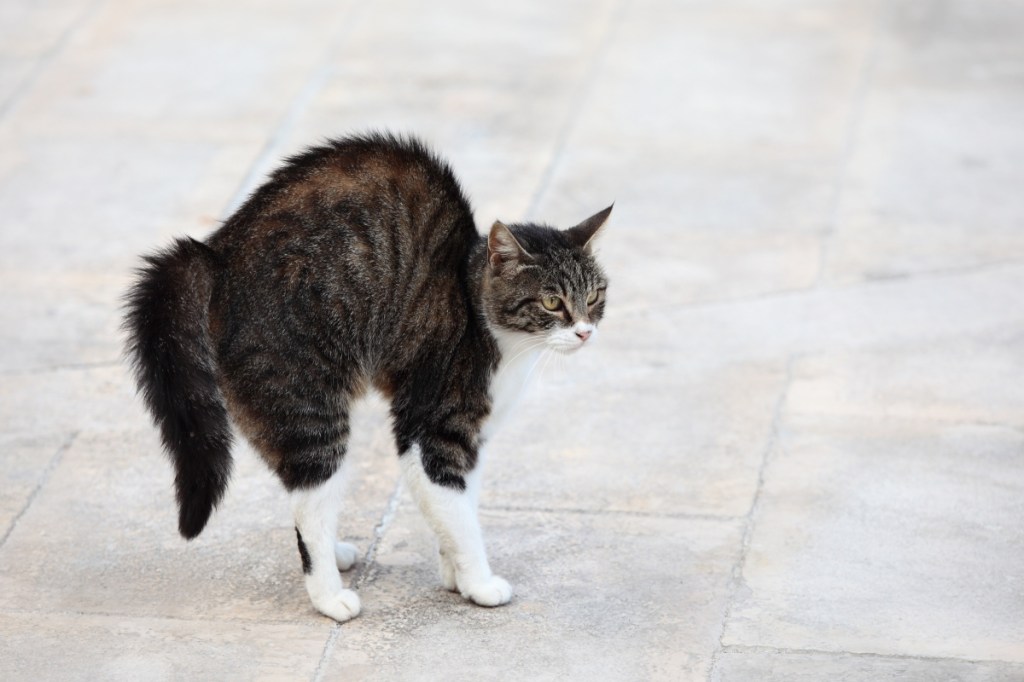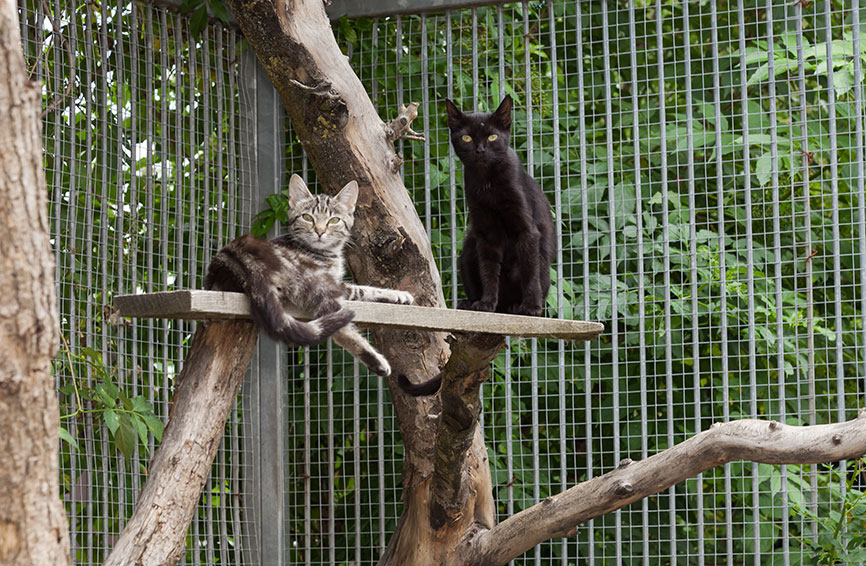Key Takeaways
- Boredom in cats can lead to destruction, anxiety, and obesity.
- Cats need mental stimulation to keep their brains active and healthy.
- Give your cat a window to watch the outside world, and choose interactive toys.
- Allow your cat to explore furniture and climb safe, vertical structures.
Table of Contents
Last updated April 8, 2022
Felines have a reputation for being sly and sneaky, sometimes too smart for their own good. (Curiosity killed the cat, anyone?) But this issue can develop into boredom-induced anxiety, destruction (like furniture scratching), and even obesity.
Cats who don’t have much interest in traditional toys and tricks like laser pointers or catnip mice have nothing to pass their time with. Imagine if you had no hobbies, couldn’t understand television, and had no thumbs – you’d go crazy in no time.
It’s important to provide our pets with mental stimulation to keep their brains firing. A bored cat can become depressed, indicated by a loss of interest in treats or favorite toys, hiding, refusal of affection (more than usual), and loss of appetite. Always have any unusual changes in your cat’s behavior checked out by a veterinarian, who can recommend treatment or behavior modifications, like increasing playtime or hanging a birdhouse outside a window. Here are some ways to entertain your little kitty genius.
1. Bring the wildlife to your cat
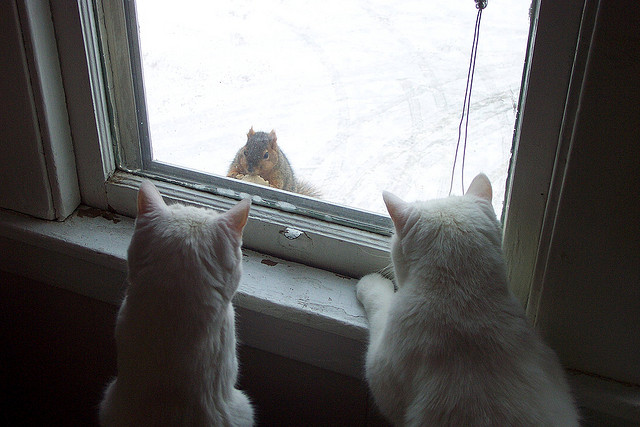
Since your pet is – hopefully – an indoors-only cat, he can’t chase your backyard birds and squirrels. Hang a bird or squirrel house outside a window for your own personal nature channel. Some felines are more interested in insects, so try a butterfly feeder or you can plant butterfly-friendly plants under a window. If you’ve always wanted a fish tank but were worried about your cat’s mischief-making, there are ways to cat-proof a fish tank; number one is putting it out of paws’ reach, with a secure tank lid.
It’s generally a bad idea to keep any rodents or small mammals as pets when you also have a cat. Even if your cat shows no interest in your gerbil, chinchilla or rat, the animal can still smell the predator and can suffer from the constant stress. It’s also stressful for cats to ignore their inner prey drive and also not very fair to them, either. Reptiles are also not compatible with cat ownership; the living situation will end badly for one pet or the other, depending on the reptile’s size.
2. Opt for interactive toys and playtime
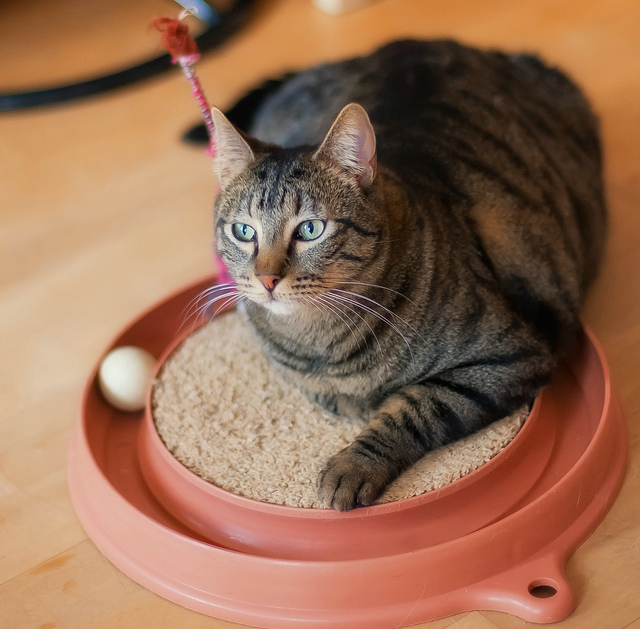
It’s true that some cat toys are just not very realistic – no one has ever confused a hot pink fake fur mouse for the real thing. Cats like movement in their playthings, like a flirt pole – basically a feather on a stick – which even the most cynical felines can’t ignore. A variety of interactive cat toys are available, from whack-a-mole to remote control mice to motion-activated lasers. You can also go the DIY route, breaking out of the box and using actual boxes. Pinterest is full of homemade cat condos, castles, and climbing walls for a variety of budgets.
Schedule regular playtime with your cat! If your cat is especially active at night, you may want to engage in play right before bedtime to tucker her out. Consider setting up some interactive cat toys she can play with on her own, like a hanging flirt pole or ball on a track. Figure out what kinds of toys really intrigue your cat and have a variety of colors and textures on hand for additional mental stimulation. Never let your cat play unsupervised with toys containing string, ribbon or yarn, which are easily swallowed and turn into intestinal obstructions.
3. Let your cat explore the furniture
We’re not saying give Fluffy a free pass to shred the couch cushions, but instead to create nooks and hidey-holes for your cat to explore. The dark, claustrophobic space under couches is felines’ idea of cozy, so make her feel more at home by putting a soft rug or thin mat under the couch. Regularly vacuum to keep things from getting too hairy and to remove choking hazards like coins, paper clips and other pocket detritus. If you have a chair with legs, stretch a cat hammock underneath for a secret perch your pet will love.
If you’re worried about never seeing your cat again, there’s a simple way to coax Kitty out from under the couch – give him a reason to! Cat treats are tempting to many pets, while jingle bells or a chirping bird toy may inspire investigation. Find what’s irresistible to your pet and use it; when you do get quality time with your cat, be gentle and go slow. In time, you may find that your cat is more affectionate when he gets uninterrupted “me time.”
4. Go vertical
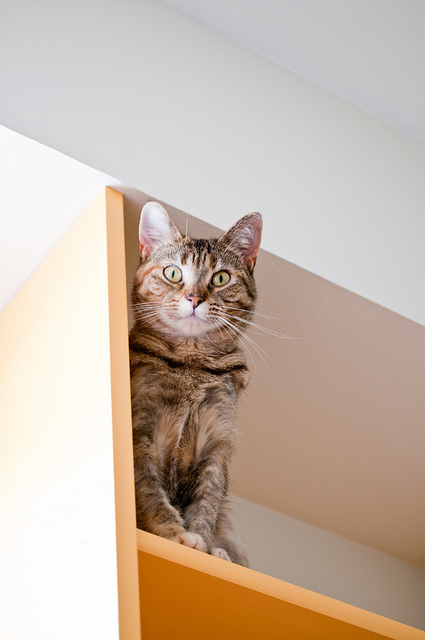
If space is an issue, let your cat explore up rather than out. Install shelves above the couch or as steps to high cabinets for a kitty obstacle course. Line them with carpet for built-in scratching and as traction for slippery paw pads. While you can purchase shelves specifically made for cats, any will do as long as they support the weight of your cat.
Set up clear boundaries between what’s jump on-able and not – kitchen counters, for example. You can try a variety of methods for shooing, like making a tsssk sound, using squirt bottle, or spritzing an all-natural cat repellent on surfaces. Citrus in particular is an effective deterrent that won’t harm cats.
5. Try putting your cat on a leash
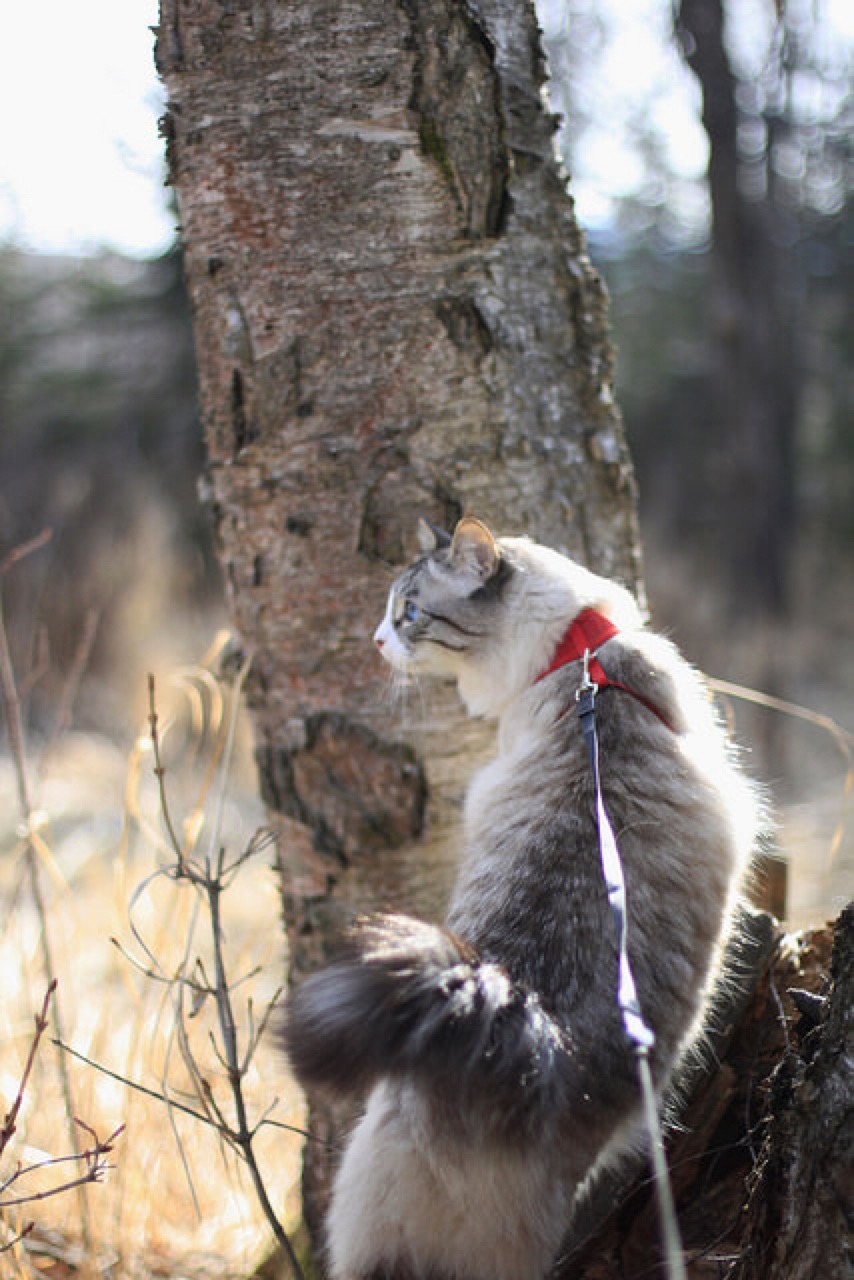
Many cats are well-behaved enough to enter the great outdoors safely leashed. Use only a harness and leash designed for cats; even those for small dogs don’t fit correctly. Make sure it’s snug enough that it won’t come off from even vigorous tugging – you should be able to slip two fingers under the cat harness, but that’s it. While we won’t get into the exact particulars of cat leash training here, safe to say it involves a lot of treats and patience.
There is always the chance your cat will fall in love with being outside and may put up a bit of a fight coming back inside. Don’t wander beyond your own yard until you’ve been practicing with your pet for several months. Cars, dogs, birds, and planes can all startle a cat and send her bolting in a strange environment. If your cat does escape the harness, try to snatch him up as soon as possible; if that fails, entice him with treats and approach slowly. Keep a cat carrier handy in case a feisty feline is too much to hold.
(Featured image via Flickr.com/appaloosa)


